
LATERALITY
Scope & Guideline
Fostering Interdisciplinary Dialogue in Brain Research
Introduction
Aims and Scopes
- Cerebral Lateralization Research:
Focuses on the neural mechanisms underlying handedness, footedness, and other forms of lateralization, investigating how these aspects relate to cognitive and emotional processing. - Behavioral Asymmetries:
Examines how lateralized behaviors manifest in both human and non-human species, including studies on motor skills, perceptual biases, and social behaviors. - Methodological Innovations:
Emphasizes the development and application of novel methodologies for assessing lateralization, such as advanced imaging techniques and behavioral assessments. - Interdisciplinary Perspectives:
Encourages contributions from various fields, including psychology, neuroscience, ethology, and sociology, to provide a comprehensive understanding of laterality. - Cultural and Environmental Influences:
Explores how societal factors, cultural contexts, and environmental conditions interact with biological aspects of lateralization.
Trending and Emerging
- Emotional Processing and Lateralization:
There is a growing focus on how emotional states are lateralized, with studies investigating the right-hemisphere dominance for certain emotions like fear. - Lateralization in Non-Human Species:
Research is increasingly expanding to include various non-human species, examining lateralization in animals such as birds, mammals, and insects, thereby broadening the scope of the field. - Impact of Developmental Factors:
Emerging studies are looking at how factors like prenatal hormone exposure affect laterality, suggesting a deeper understanding of the developmental underpinnings of lateralization. - Cultural Influences on Laterality:
Investigations into how cultural contexts and societal norms influence lateralization patterns are becoming more prominent, highlighting the interplay between biology and environment. - Innovative Measurement Techniques:
The introduction of new methodologies and technologies, such as transcranial Doppler ultrasound and online behavioral assessments, is enhancing research capabilities in lateralization studies.
Declining or Waning
- Traditional Handedness Studies:
Research centered solely on handedness without considering broader lateralization factors is becoming less frequent, as the field shifts towards more integrated approaches. - Static Models of Lateralization:
The reliance on fixed, binary models of left vs. right lateralization is waning, with a growing preference for dynamic and nuanced views of lateralization in brain function. - Overemphasis on Human Subjects:
There is a noticeable reduction in studies exclusively focused on human participants, reflecting a trend toward comparative studies involving various species to understand lateralization. - Simple Correlational Studies:
Research that only correlates handedness with singular behavioral outcomes is declining, as more complex interactions and underlying mechanisms are being prioritized.
Similar Journals
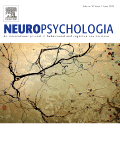
Neuropsychologia
Connecting Dots Between Mind and Brain for Over 60 YearsNeuropsychologia, published by PERGAMON-ELSEVIER SCIENCE LTD, is a premier journal that delves into the intersections of psychology and neuroscience, specifically focusing on behavioral and cognitive processes. Since its inception in 1963, this esteemed journal has been a vital platform for researchers, professionals, and students, showcasing innovative studies and advancements in the fields of Behavioral Neuroscience, Cognitive Neuroscience, and Experimental Psychology. With a commendable impact factor, placing it in the Q2 category across multiple disciplines, Neuropsychologia is recognized for its contribution to the scientific community, ranking among the top journals in both Experimental and Cognitive Psychology and Neuroscience. The journal's commitment to excellence is evident in its rigorous peer-review process and its mission to disseminate cutting-edge research, making it an invaluable resource for those seeking to expand their knowledge and insights in neuropsychology. For further reading, the journal is accessible in both print and digital formats, ensuring that researchers can easily engage with the latest findings and theoretical advancements in this dynamic field.
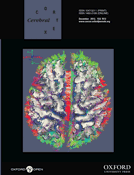
CEREBRAL CORTEX
Advancing knowledge in cortical neuroscience.CEREBRAL CORTEX, published by Oxford University Press Inc, is a premier journal dedicated to advancing the field of neuroscience, specifically focusing on the cellular, molecular, and cognitive aspects of cortical structure and function. With an impressive impact factor that situates it in the top quartile (Q1) of its categories for 2023, this journal holds significant relevance for researchers and professionals interested in the latest discoveries and methodologies in both Cognitive Neuroscience (ranked #31 out of 115) and Cellular and Molecular Neuroscience (ranked #48 out of 97). Operating without an open access model, it ensures rigorous peer review and dissemination of high-quality research from across the globe. Since its inception in 1991, CEREBRAL CORTEX has established itself as a critical platform for educators and inventors, pushing the boundaries of knowledge in understanding brain function and its implications for behavior. Researchers and students alike will find this journal an invaluable resource for both foundational and cutting-edge studies in neuroscience.
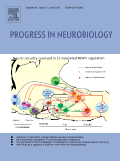
PROGRESS IN NEUROBIOLOGY
Unveiling Innovations in NeurosciencePROGRESS IN NEUROBIOLOGY is a prestigious journal dedicated to advancing the field of neuroscience, published by Pergamon-Elsevier Science Ltd. With an impressive impact factor, it stands as a critical resource for researchers, professionals, and students alike, featuring rigorous peer-reviewed articles that explore the latest developments in neurobiology. The journal has established itself as a leading publication, ranked in the Q1 category for Neuroscience (miscellaneous) and holding a notable 13/113 rank in General Neuroscience per Scopus metrics, placing it in the top 12% of its field. Since its inception in 1959, PROGRESS IN NEUROBIOLOGY has covered a wide array of topics, from molecular mechanisms to cognitive processes, fostering a comprehensive understanding of brain functions. While the journal is not open access, it ensures accessibility to profound knowledge through institutional subscriptions. Researchers and scholars will find critical analyses and innovative research that are pivotal for both foundational knowledge and cutting-edge investigations in the neuroscience realm.

Brain Imaging and Behavior
Transforming Perspectives: The Science of Brain Imaging and BehaviorBrain Imaging and Behavior is a premier journal published by SPRINGER, dedicated to advancing the understanding of the relationship between brain function and behavior through innovative imaging techniques. Since its inception in 2007, the journal has provided a crucial platform for researchers and professionals in fields such as Behavioral Neuroscience, Cognitive Neuroscience, and Psychiatry and Mental Health. With an impressive ranking within the Q1 category in Radiology, Nuclear Medicine and Imaging and maintaining strong Q2 status in several other categories, the journal is positioned as a leading resource for groundbreaking research. The journal aims to disseminate high-quality studies that explore neurobiological underpinnings of behavior, utilizing cutting-edge imaging technologies. Although it is not an open-access journal, the visibility and impact of published works in Brain Imaging and Behavior continue to influence the scientific community significantly, underscoring the critical intersection between imaging science and neuroscience.
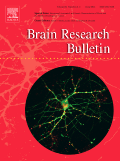
BRAIN RESEARCH BULLETIN
Fostering scholarly dialogue in the realm of neuroscience.BRAIN RESEARCH BULLETIN is a leading academic journal published by PERGAMON-ELSEVIER SCIENCE LTD, dedicated to the dissemination of high-quality research in the interdisciplinary field of neuroscience. Since its inception in 1976, this journal has served as a vital platform for researchers, professionals, and students interested in a broad spectrum of topics within neuroscience, making significant contributions to the understanding of brain function and its associated disorders. With a commendable impact factor and a current Scopus rank of #35 out of 113 in general neuroscience, the journal holds a Q2 quartile ranking, underscoring its relevance and influence in the academic community. BRAIN RESEARCH BULLETIN invites submissions of original articles, reviews, and brief communications, enhancing scholarly communication within this dynamic field. Although the journal is not open access, it ensures widespread reach and impact through various subscription models, allowing access to pivotal findings that pave the way for future research advancements. For researchers aiming to share impactful discoveries and insights within the neuroscience community, BRAIN RESEARCH BULLETIN remains an essential outlet.

PERCEPTUAL AND MOTOR SKILLS
Illuminating the Link Between Perception and ActionPERCEPTUAL AND MOTOR SKILLS is a distinguished academic journal published by SAGE Publications Inc, primarily focusing on the disciplines of Experimental and Cognitive Psychology as well as Sensory Systems. With a legacy dating back to its inception in 1962 and continuing through to 2024, this journal serves as a vital resource for researchers and professionals in understanding the complexities of perception and motor processes. Although it currently holds a Q3 status in major categories, it consistently contributes to the discourse of these critical fields, ranking within the 40th and 29th percentiles for its respective categories according to Scopus metrics. While not an open-access journal, PERCEPTUAL AND MOTOR SKILLS remains a reputable platform for disseminating research findings, ensuring that insights on human perception and motor function are accessible to a broader academic audience. With an aim to advance scholarly discussion and foster innovative research, this journal is an essential read for those endeavoring to explore the rich interplay between perceptual mechanics and motor skills.
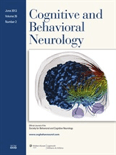
Cognitive and Behavioral Neurology
Innovating Research in Neurology and CognitionCognitive and Behavioral Neurology is a prominent peer-reviewed journal dedicated to advancing the understanding of cognitive and behavioral aspects of neurological disorders. Published by Lippincott Williams & Wilkins, this journal has established itself as a vital resource for researchers, clinicians, and students in the fields of cognitive neuroscience, neuropsychology, and psychiatry. With an ISSN of 1543-3633 and an E-ISSN of 1543-3641, it offers a robust platform for the dissemination of high-quality research, as evidenced by its positioning in the Q3 quartiles across various categories, including Cognitive Neuroscience and Psychiatry. The journal, which has been actively publishing since 2003, encourages innovative studies that explore the intersection of cognition and behavior in neurological contexts. As a vital contributor to the academic dialogue on these topics, it provides an essential archive of findings and discussions that inform clinical practice and educational approaches, reflecting its commitment to improving patient outcomes and enhancing neurological science.
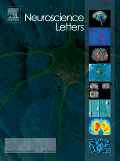
NEUROSCIENCE LETTERS
Bridging Gaps in Neuroscience Knowledge.NEUROSCIENCE LETTERS is a distinguished journal published by ELSEVIER IRELAND LTD, focusing on disseminating impactful research across the field of neuroscience. With its ISSN 0304-3940 and E-ISSN 1872-7972, the journal serves as a vital platform for researchers, professionals, and students aiming to explore the complexities of nervous system function and related disorders. Since its inception in 1975, NEUROSCIENCE LETTERS has contributed significantly to the field, currently positioned in the Q3 category for Miscellaneous Neuroscience, with a respectable Scopus rank of 52/113, placing it in the 54th percentile among its peers. The journal is published in Ireland and offers a comprehensive repository of scientific insights, methodologies, and innovative findings that advance our understanding of neurological phenomena. While not an open-access journal, it remains an essential resource for the latest advances in neuroscience research and the academic community’s collective knowledge.
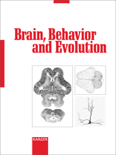
BRAIN BEHAVIOR AND EVOLUTION
Illuminating the Pathways of Neurobiological ChangeBRAIN BEHAVIOR AND EVOLUTION, with ISSN 0006-8977 and E-ISSN 1421-9743, is a prominent journal dedicated to the intricate connections between brain function, behavior, and evolutionary processes. Published by KARGER in Switzerland, this journal has established itself as a crucial resource in the fields of Behavioral Neuroscience and Developmental Neuroscience, evidenced by its respectable 2023 category quartiles of Q2 and Q3, respectively. With a rich publication history spanning from 1968 to 2024, BRAIN BEHAVIOR AND EVOLUTION presents original research articles, reviews, and theoretical contributions that investigate the biological underpinnings of behavior, making it an essential platform for researchers, professionals, and students committed to advancing our understanding of neurobiological and evolutionary mechanisms. Although it is not an open-access journal, its rigorous peer-review process ensures that only high-quality research is disseminated, maintaining the journal's impact in the academic community.

Cerebral Circulation-Cognition and Behavior
Illuminating the Pathways of Thought and BehaviorCerebral Circulation-Cognition and Behavior is an impactful journal published by Elsevier that focuses on the intersections of cerebral circulation, cognitive function, and behavioral science. Since its establishment in 2020, the journal has provided a vital platform for researchers and professionals in the fields of Behavioral Neuroscience, Biological Psychiatry, and Cognitive Neuroscience. With a current classification in the Q3 quartile across several neuroscience categories and a promising trajectory during its converged years (2020-2024), the journal highlights significant advancements in our understanding of the neural underpinnings of behavior. Although it is not open access, its commitment to quality research makes it an essential resource for anyone engaged in neurological, cognitive, and psychiatric studies. As discoveries in these fields continue to grow, Cerebral Circulation-Cognition and Behavior remains dedicated to disseminating influential findings that bridge the gap between cognition, behavior, and neural health.